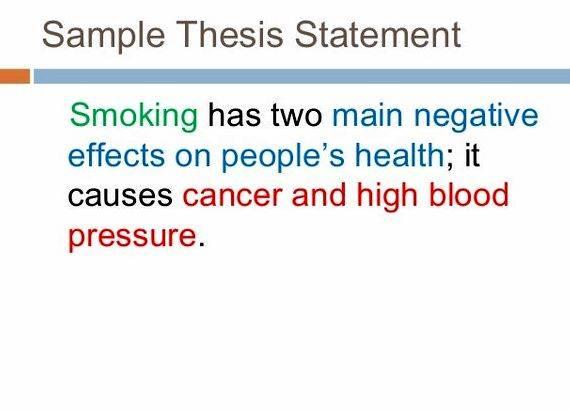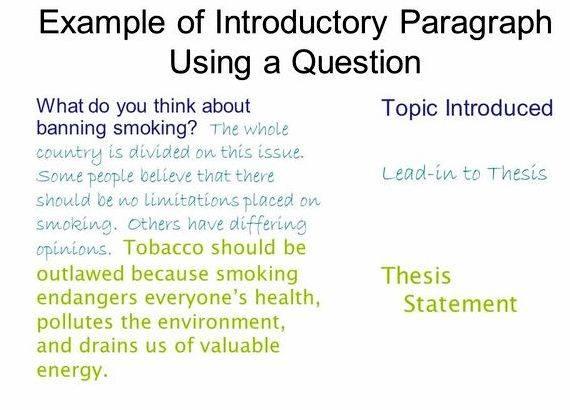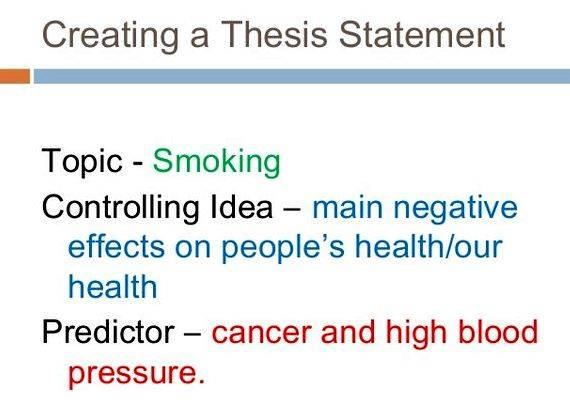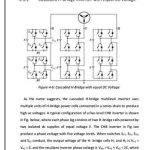How to Write A Thesis Statement Effectively
Are you one of the many people who do not know how to write a thesis statement? If you are, it is not difficult at all. It just takes some practice.
A thesis is simply “what you plan to say or write.” Thus, before you can write a thesis, you have to have some idea of “what you plan to say or write.” If you don’t, stop here and go to my writing ideas page to learn some great ways to get your ideas flowing. If you already have some ideas and have done some brainstorming, then proceed.
No matter if you are writing a paper or giving a speech, there are two essential elements you must include:
- Begin with a point or a thesis.
Keep reading to find out more information on just how to do this.
**Note: Although I only mention a “written essay” below, a thesis statement is essential to have in both a written assignment as well as a verbal presentation. Why? Because a thesis statement presents a clear layout for the information you are about to present to your readers or listeners. It provides a sense of structure. A well written thesis statement emphasizes a specific topic and gives readers a clear idea of what the paper or speech will be about. A good thesis helps the writer, as well, by organizing the rest of the paper/speech.
On some rare occasions, a thesis statement may be implied and not directly stated. In cases like this, the writer makes several arguments and examples where a similar idea (thesis) is indirectly stated. The writer expects for the reader to be able to articulate those ideas and details and come up with a conclusion about the topic. When a thesis is implied, the writer leads the reader to their desired conclusion by providing the reader with hints to what he/she is trying to get you to understand-which is basically their purpose (or thesis).
However in most cases like in an academic setting, professors want students to have a direct thesis in your paper. Even if you aren’t required to have a thesis statement, it is a good rule of thumb to always include one in your paper.
Here are some tips for how to write a thesis effectively:
- Make sure you have brainstormed your ideas first before you start writing your paper. If you need help getting your ideas down on paper, click here for some useful writing ideas and pre-writing strategies.
- Never write your thesis as an opinion.
EXAMPLE:I think that schools should ban smoking.
Your readers know “what you think” because you wrote it. By simply rephrasing the sentence to “Schools must ban smoking,” you have a more powerful sentence that urges your readers that action is needed.
Avoid awkward announcements like: “In this essay I will talk about…” or “I will attempt to show you” or “I feel that”. Instead you should jump right into what your point is by simply stating “Smoking on campus is a serious problem.”
These are just a few tips on how to write a thesis strategically.
What does a thesis statement look like?
Well, a thesis statement is usually one sentence that can be found in the introduction.
It should be the last sentence of the introductory paragraph. Keep in mind that some introductions are more than one paragraph.

If this is the case in your essay, then be sure that your thesis is the last sentence of your introduction. However for more complex topics, the length of a thesis can be more than one sentence; it can even be a few sentences.
A sample thesis may look like this:
Smoking must be banned on all campuses to prevent second hand smoke, hazardous fires, and to promote a clean campus environment.
Smoking must be banned on all campuses.
In the first example, the writer is telling the reader what each additional paragraph will be about.
In the second example, the writer is simply stating what they are arguing.
So now that you know what a thesis statement looks like, let’s explore how to write one
Once you have brainstormed all of your ideas about a particular topic you should have some sub-ideas about that topic.
Take each of those ideas and write one or two sentences that will be the basis for your argument.
Then, guess what? You have a thesis statement! Now you no longer have to Google “how to write a thesis statement.” 🙂
Yes, it is that easy. The hardest part is taking the time to really think about what you want your readers to get out of the information that you are presenting to them. Click here to learn how to organize and work through your writing ideas.
If you are still not sure how to write a thesis, ask yourself the following questions:
- What is my essays purpose?
- How can I develop it?
- What do I want to prove or explain to my audience?
By asking yourself these questions, you will be forced to come up with a specific sentence that will address what your purpose is. Remember:
You have to back up your thesis with specific evidence in your body paragraphs. To learn how to write a paragraph effectively, click here. Do not include information in your thesis that you will not explain later in your essay.
You can always modify your thesis as you write your paper. As you write, you will find that maybe one of your sub-ideas is linked to another or maybe one is hard to develop and you prefer to omit it. That is fine, take the time to fine-tune your thesis to truly reflect the message you are trying to convey.
Writing takes practice and patience. As you write more, you will learn even more tools on how to write a thesis as well as many other different parts of an essay. Whatever you do, just don’t give up. Practice is key!
If you need more help on how to write a thesis or any other aspect of your paper, feel free to contact me.
2011-2012 Writing-Savvy.org
All rights reserved.
No reproduction permitted without permission.
This page is brought to you by the OWL at Purdue (https://owl.english.purdue.edu/). When printing this page, you must include the entire legal notice at bottom.
Tips and Examples for Writing Thesis Statements
This resource provides tips for creating a thesis statement and examples of different types of thesis statements.
Contributors: Elyssa Tardiff, Allen Brizee
Last Edited: 2014-02-10 10:44:43
Tips for Writing Your Thesis Statement
1. Determine what kind of paper you are writing:
- An analytical paper breaks down an issue or an idea into its component parts, evaluates the issue or idea, and presents this breakdown and evaluation to the audience.
- An expository (explanatory) paper explains something to the audience.
- An argumentative paper makes a claim about a topic and justifies this claim with specific evidence. The claim could be an opinion, a policy proposal, an evaluation, a cause-and-effect statement, or an interpretation. The goal of the argumentative paper is to convince the audience that the claim is true based on the evidence provided.
If you are writing a text that does not fall under these three categories (e.g. a narrative), a thesis statement somewhere in the first paragraph could still be helpful to your reader.
2. Your thesis statement should be specificit should cover only what you will discuss in your paper and should be supported with specific evidence.
3. The thesis statement usually appears at the end of the first paragraph of a paper.
4. Your topic may change as you write, so you may need to revise your thesis statement to reflect exactly what you have discussed in the paper.
Thesis Statement Examples
Example of an analytical thesis statement:
An analysis of the college admission process reveals one challenge facing counselors: accepting students with high test scores or students with strong extracurricular backgrounds.
The paper that follows should:
- Explain the analysis of the college admission process
- Explain the challenge facing admissions counselors
Example of an expository (explanatory) thesis statement:
The life of the typical college student is characterized by time spent studying, attending class, and socializing with peers.
The paper that follows should:
- Explain how students spend their time studying, attending class, and socializing with peers
Example of an argumentative thesis statement:
High school graduates should be required to take a year off to pursue community service projects before entering college in order to increase their maturity and global awareness.
The paper that follows should:
- Present an argument and give evidence to support the claim that students should pursue community projects before entering college
1995-2016 by The Writing Lab The OWL at Purdue and Purdue University. All rights reserved. This material may not be published, reproduced, broadcast, rewritten, or redistributed without permission. Use of this site constitutes acceptance of our terms and conditions of fair use .






 Writing a good thesis powerpoint
Writing a good thesis powerpoint Wireless power transfer thesis proposal
Wireless power transfer thesis proposal Cascaded multilevel inverter thesis writing
Cascaded multilevel inverter thesis writing Writing your thesis introduction outline
Writing your thesis introduction outline






